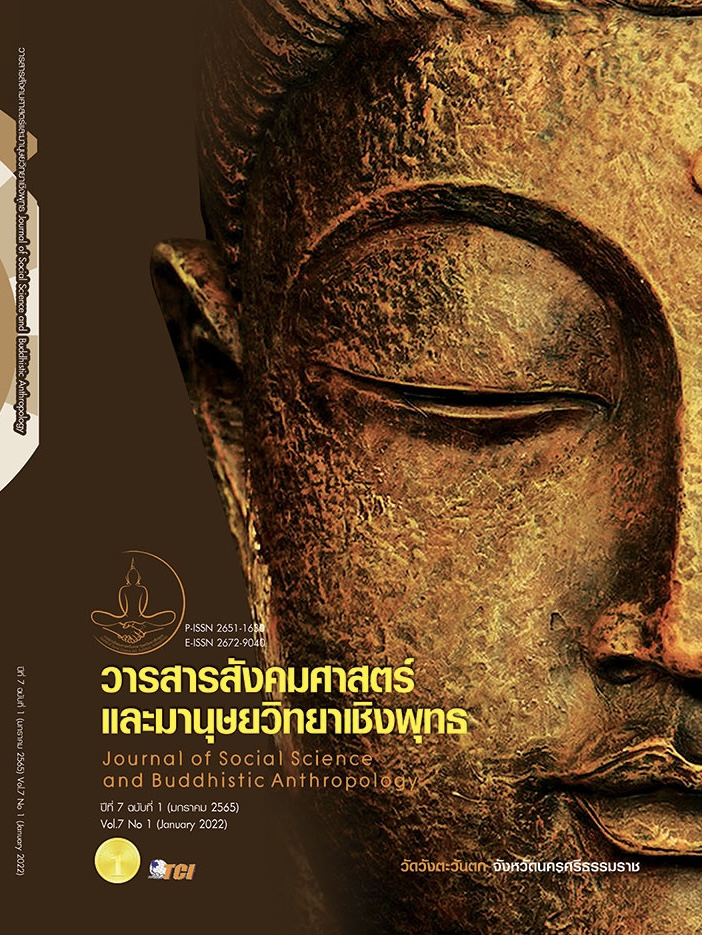THE CHARACTERISTIC AND COST STRUCTUTRE OF CONDOMINIUMFOR THE ELDERY IN THAILAND
Keywords:
Aging Society, Retirement Homes, Hedonic Pricing Model, Nursing Care ServicesAbstract
The objectives of this research article were to study the price structure and physical characteristics of residential condominiums for the elderly. The physical characteristics study focused on function area requirements, facilities, and services. The research method studied the close correlation between price and physical characteristics. The research was quantitative and applied purposive sampling (offset the sampling area from the Jin Wellbeing County). The total sample population of 194 room types was randomly selected from 62 projects and divided into 2 large groups. The first group, known as “Jin Wellbeing County,” was defined as a project with unique characteristics and services for the elderly and had 4 types of residential rooms. Jin Wellbeing County was considered the central area of randomization. The second group had 61 projects with similar building physical characteristics as the first group, but without service provided for the elderly. Group 2 was divided into 3 subgroups from 3 zones offsetting from the center. Each zone with approximately 20 projects was selected by Google Maps using the function “Nearby.” Data on twenty - four variables were collected from this randomization. Research data collection: selling prices were gathered from various websites in case of newly built projects, while the selling price of the second group could not be found. Therefore, the second - hand selling price was considered as Group 2’s price instead. Research tools included surveys, observations, Hedonic Pricing Model (HPM), and linear equation analytical methods. The results indicated that pricing of residential condominiums for elderly people in Thailand was based on four main factors: 1) medical and nursing services; 2) recreational and activity areas for senior citizens; 3) high - rise buildings suggesting privacy and neighbors; and 4) the service charge reflecting the luxury level of the project. Each factor had a different price value.
References
กรมกิจการผู้สูงอายุ กระทรวงการพัฒนาสังคมและความมั่นคงของมนุษย์. (2564). มาตรการขับเคลื่อนระเบียบวาระแห่งชาติ เรื่อง สังคมสูงอายุ (ฉบับปรับปรุง). เรียกใช้เมื่อ 21 กรกฎาคม 2564 จาก http://www.dop.go.th/download/knowledge/th1551432930-155_0.pdf
กรมสุขภาพจิต. (2563). ก้าวย่างของประเทศไทยสู่‘สังคมผู้สูงอายุ’อย่างสมบูรณ์แบบ. เรียกใช้เมื่อ 20 กุมภาพันธ์ 2564 จาก https://www.dmh.go.th/news-dmh/view.asp?id=30476
จุฑาทิพย์ บำเพ็ญบุญ. (2559). ปัจจัยกำหนดราคาคอนโดมิเนียมแนวรถไฟฟ้าสายสีม่วง. ใน วิทยานิพนธ์เศรษฐศาสตร์มหาบัณฑิต สาขาวิชาเศรษฐศาสตร์. มหาวิทยาลัย เกษตรศาสตร์.
บุษยากรณ์ ดรุณวัต. (2560). การศึกษาปัจจัยที่มีอิทธิพลต่อพฤติกรรมตัดสินใจซื้อที่อยู่อาศัยหลังเกษียณอายุ กรณีศึกษาประชากรกลุ่ม B ในเขตกรุงเทพมหานครและปริมณฑล. ใน สารนิพนธ์บริหารธุรกิจมหาบัณฑิต สาขาวิชาการจัดการเชิงกลยุทธ์. มหาวิทยาลัย ธรรมศาสตร์.
มูลนิธิสถาบันวิจัยและพัฒนาผู้สูงอายุไทย. (2562). รายงานสถานการณ์ผู้สูงอายุไทย ปี 2562. เรียกใช้เมื่อ 24 มีนาคม 2563 จาก https://www.dop.go.th/download/knowledge/th1610945020-322_0.pdf
เสาวลักษณ์ กิตติญาณปัญญา. (2562). การศึกษาปัจจัยที่มีอิทธิพลต่อการเลือกที่อยู่อาศัยผู้สูงอายุของกลุ่มผู้สูงอายุในอนาคตในกรุงเทพมหานคร. ใน สารนิพนธ์วิทยาศาสตรมหาบัณฑิต สาขาธุรกิจอสังหาริมทรัพย์. มหาวิทยาลัยธรรมศาสตร์.
Antti, T. K. & Tanja, T. (2016). The impact of senior house developments onsurrounding residential property values. PropertyManagement, 34(5), 415-433.
Chaulagain, S. et al. (2021). Factors affecting seniors’ decision to relocate to senior living communities. Retrieved January 24, 2021, from https://doi.org/10.1016/j.ijhm.2021.102920
Chen, C. & Rothschild, R. (2010). An application of hedonic pricing analysis to the case of hotel rooms in Taipei. Tourism Economics, 16(3), 685-694.
EnviorLiving.org a Centerfield Media Company. (2021). Types of Senior Living and Levels of Senior Car. Retrieved December 11, 2020, from http://www.seniorliving.org/infographics/senior-living-type-versus-cost/
Fischer, M. M. & Nijkamp, P. (2014). Housing Choice Residential Mobility and Hedonic Approaches. Retrieved December 11, 2020, from https://ur.booksc.eu/book/22311108/70f71b
Google. (2021). Near by jin wellbeing county. Retrieved January 24, 2021, from https://www.google.co.th/maps
J.M.A.I.K. Jayalath. (2016). Determinants of Market Value for Condominium Properties: Case Study in Dehiwala, Colombo. Retrieved December 11, 2020, from https://papers.ssrn.com/sol3/papers.cfm?Abstractid=2909745
Li, H. et al. (2018). Analyzing housing prices in Shanghai with open data: Amenity, accessibility and urban structure. Retrieved January 24, 2021, from https://doi.org/10.1016/j.cities.2018.11.016
Murphy, R. E. (1975). The American City: An Urban Geography. (2nd Ed.). Newyork: McGrawHill.
Rosen, S. (1974). Hedonic Prices and Implicit makets: product differentiation in pure competition. Journal of Political Economy, 82(1), 34-55.
Sutthichai, J. & Suvinee, W. (2009). National Policies and Programs for the Aging Population in Thailand. Ageing Int, 33(1-4), 62-74.
Yuan, F. et al. (2019). Amenity effects of urban facilities on housing prices in China: Accessibility, scarcity, and urbanspaces. Retrieved February 18, 2021, from https://doi.org/10.1016/j.cities.2019.102433
Downloads
Published
How to Cite
Issue
Section
License
Copyright (c) 2022 Journal of Social Science and Buddhistic Anthropology

This work is licensed under a Creative Commons Attribution-NonCommercial-NoDerivatives 4.0 International License.








